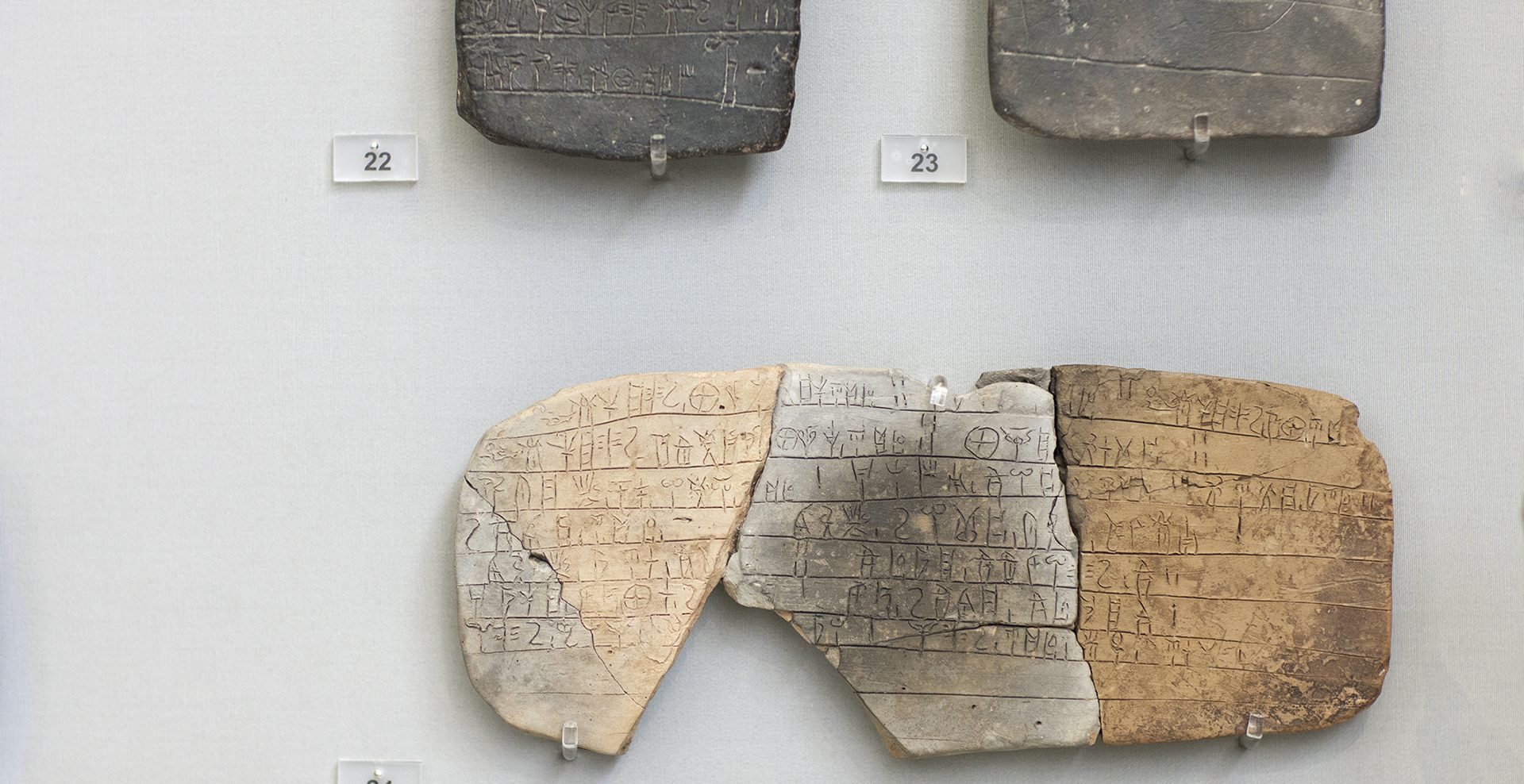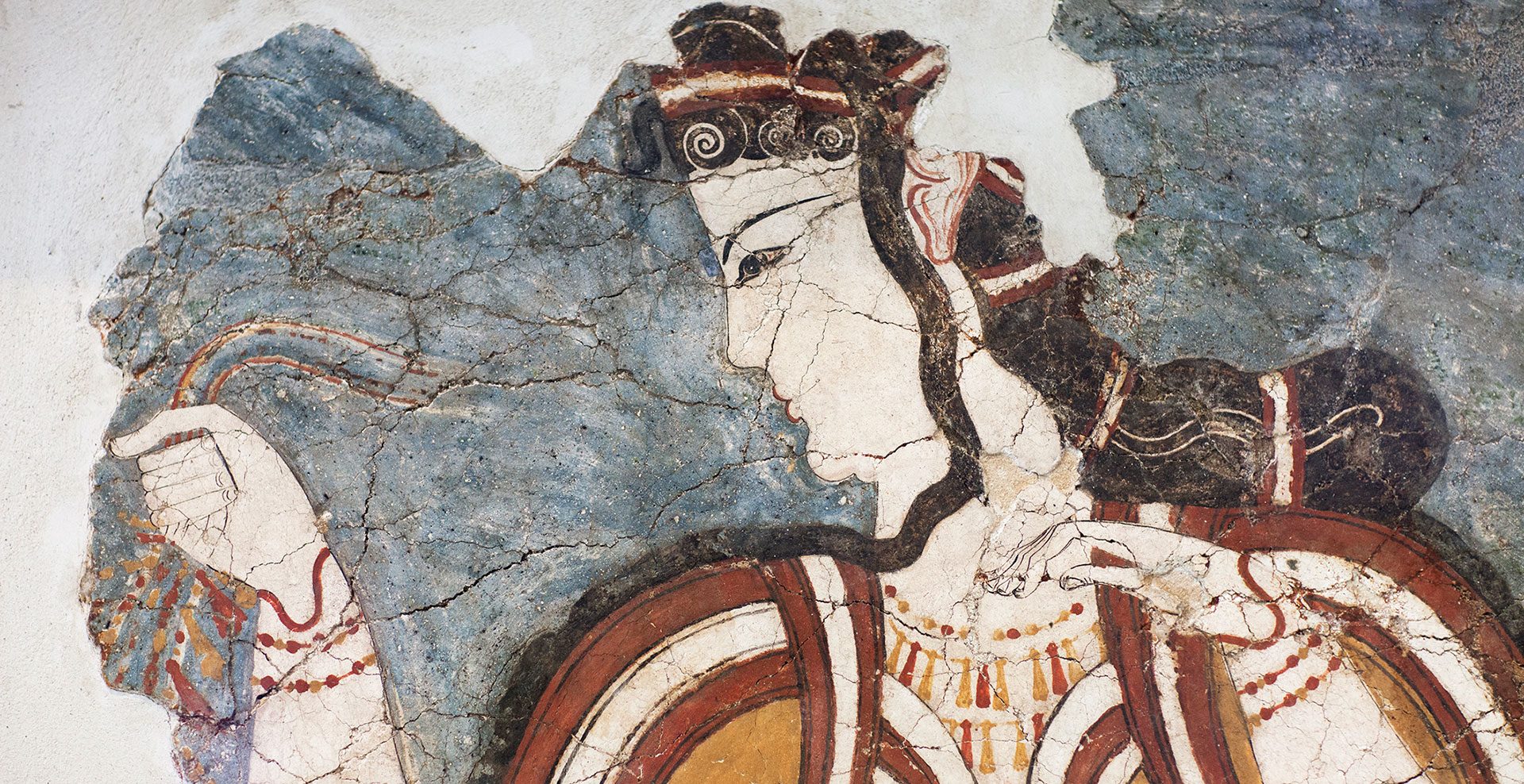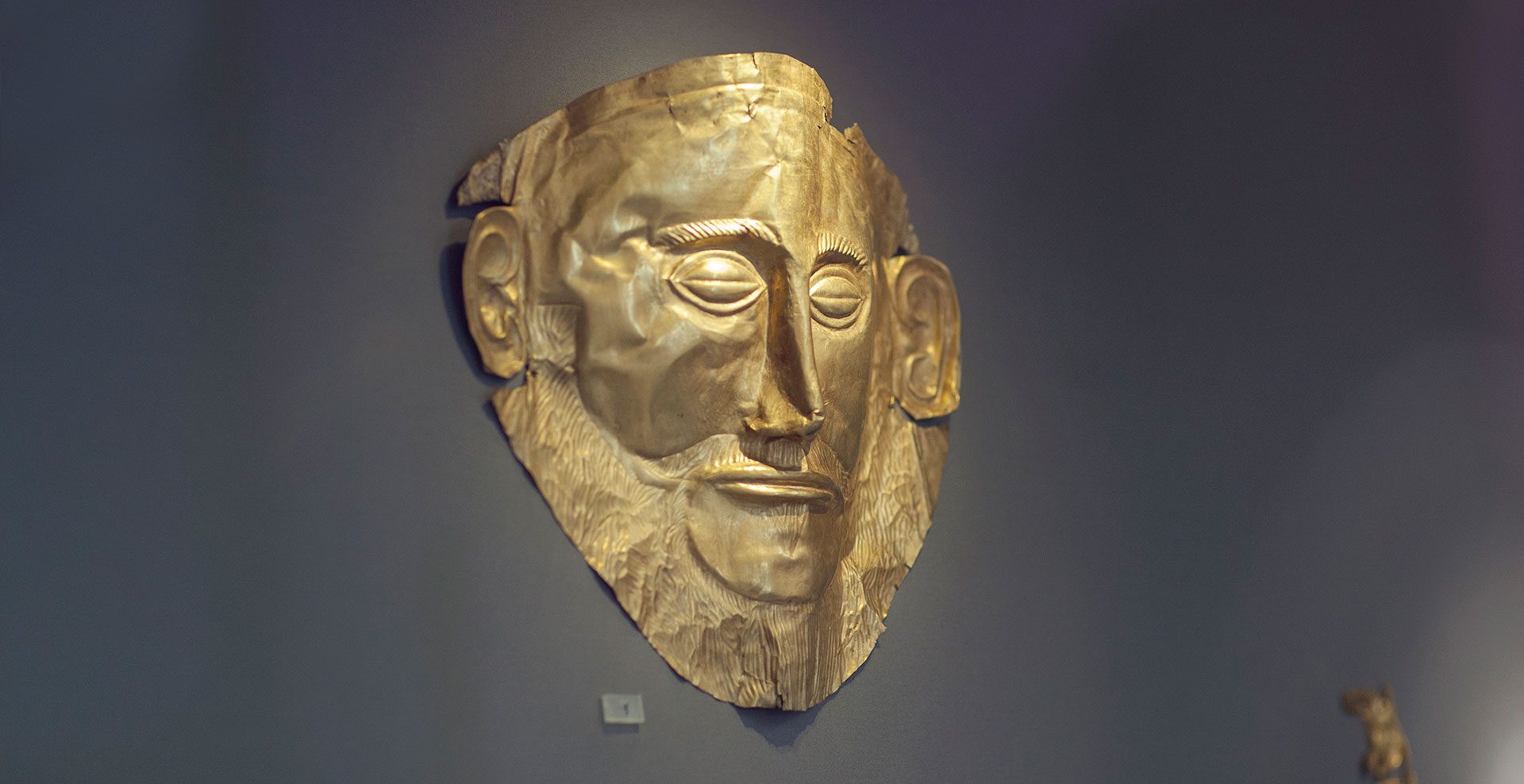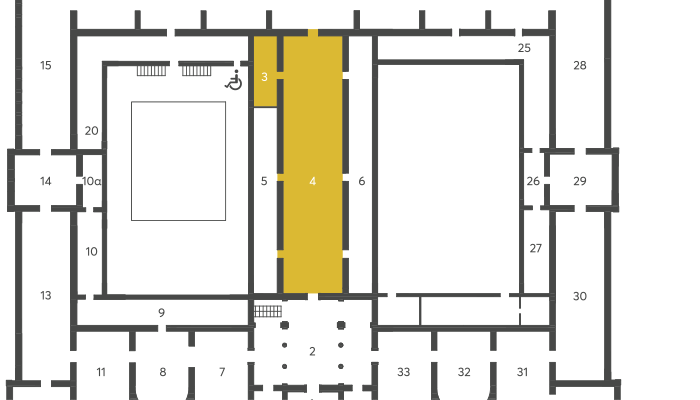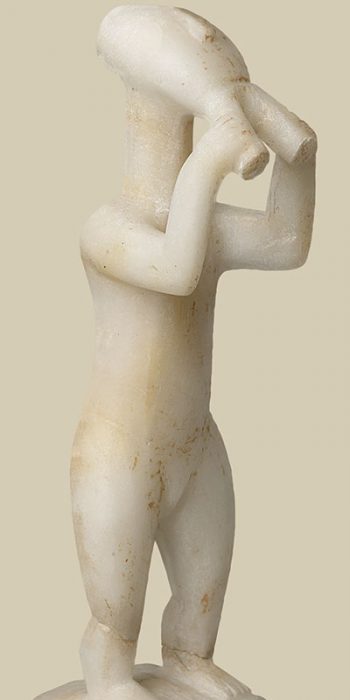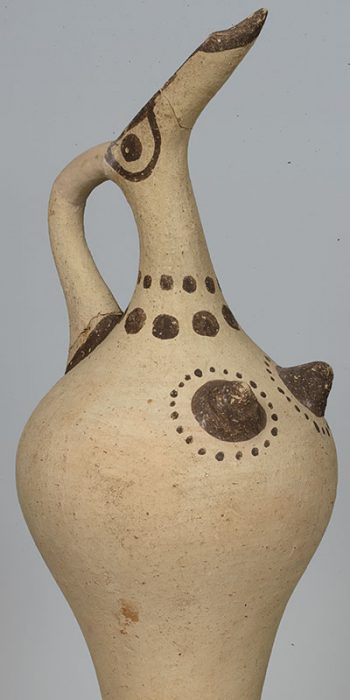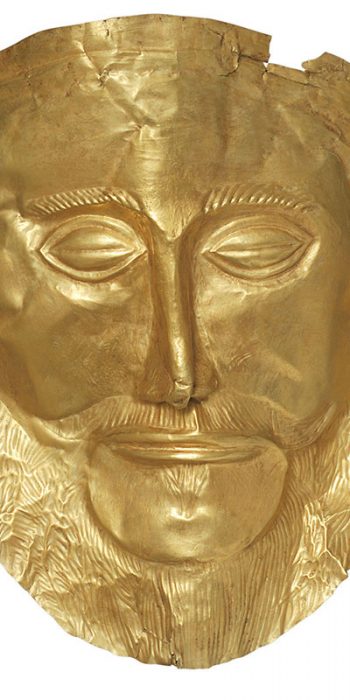Collection of Mycenaean Antiquities
The Mycenaean world (1600-1100 BC) developed in Greece, which has always served as a bridge between the East and the West. Its impact stretched from Asia Minor, the Near East and Egypt to the Western Mediterranean and North-western Europe. It is traditionally believed that its bearers, the Greek-speaking Achaeans, settled in Greece in around 2000 BC. The inception of the Mycenaean civilization that was called after its largest centre, Mycenae in the Peloponnese, was marked by the rise of groups of warrior kings who maintained relations with the already advanced Minoan civilization of Crete. A vivid picture of the wealth of the early Mycenaean Period is unveiled in the royal shaft graves of Mycenae (Grave Circles A and B of Mycenae), dated to the 16th century BC, with the valuable grave goods, symbols of social status and office that formed the basis for Homer’s golden Mycenae.
The large palaces of Mycenae, Tiryns and Pylos in the Peloponnese, as well as at Thebes in Boeotia, which were enclosed by strong Cyclopean walls, constituted administrative, economic, military and religious centres of the respective wider regions. The central administration, hierarchically organized, led by the “anax” (king), maintained archives that consisted of clay tablets inscribed with Linear B script, the first Greek script, adapted to the Greek language of the Minoan Linear A precursor. The acropolises were surrounded by organized settlements and cemeteries of chamber tombs whose opulent grave goods reveal social stratification and a prosperous society. The magnificent tholos (beehive) tombs, such as the tholos tomb of Atreus (Treasury of Atreus), the Vapheio tholos tomb at Laconia or the tholos tombs of mythical Iolkos in Thessaly were intended for the ruling elite.
According to tradition, the demise of the Mycenaean centralized palatial administration system took place in the late 13th century BC after the Trojan War which was a joint venture of the Achaean rulers. The causes can be traced in the social unrest, the economic decline and the migration of peoples “of the land and the sea” across the Mediterranean that destroyed the centres of Asia Minor and the East, and also in the archaeologically attested powerful earthquakes. These changes signalled the beginning of the new period in Greece during the 12th century BC which was the last century of the Mycenaean civilization. The new conditions favoured the unrestricted development of local centres in the Peloponnese, the Cyclades and Crete, whereas life continued in the known acropolises, at Mycenae and mainly Tiryns. The end of the Mycenaean civilization during the 11th century BC inevitably brought about a cultural decline; nevertheless, during the Geometric period and until the 8th century BC the way was paved for the emergence of the Greek city. The Mycenaean civilization has been consigned to myth and legend ever since.
Room 4
Room 4 introduces us to the radiance of the Mycenaean gold. The glorious Mycenaean civilization is presented in three units. Guardians and at the same time heralds of its reputation, the imposing grave stelae stand at the entrance of the exhibition. The valuable tableware and ritual vessels, the daggers with the impressed decoration, the masterful signet rings, the exotic artefacts as well as the large number of bronze weapons of the deceased rulers comprise the first unit of the exhibition. Centrally mounted are the watchful gold death masks, emblems of the first great civilization of Mainland Greece.
The second unit of the exhibition discloses the secrets of the Mycenaean palaces. In the thematically arranged display cases visitors are acquainted with the religious life of the major centres, the palatial art of wall paintings, the production of the royal workshops, the state archives written in Linear B, the international relations and the overseas trade of the great centres of the Peloponnese. The “Warrior Stele” and the “Warrior Vase” in the centre praise the military preparedness of the acropolises, whereas the exquisite “Ivory Triad” is revealing of the charm of the peaceful religious life.
The exhibits of the final unit focus on the world of the dead. The relief half-columns that come from the entrance of the “Treasury of Atreus” serve as the setting for the display of a selection of gold, silver, stone and clay vessels, jewels made of gold, glass paste and faience used as grave goods of the deceased of the city of Mycenae and the royal tombs at Dendra. The centre is dominated by the superb cups and other treasures that had been deposited in the tholos (beehive) tombs at Vapheio in Laconia, at Myrsinochori and Pylos, the other major Mycenaean centres of the Peloponnese.
Room 3
The Small Mycenaean Room (Room 3) is dedicated to the life and the accomplishments of the Mycenaean centres outside the Peloponnese. A complete picture of Mycenaean Attica is uniquely offered with selections of the wonderful creations made of ivory and the glass artefacts from the tombs of Menidi and Spata, curious ritual vessels of Attica made of clay and the finds from the Acropolis of Athens, grave goods from tombs at Mesogaia or the coast, groups typical of the final phases of the Mycenaean Period from Perati and others from Salamis. The gold grave goods from the tholos (beehive) tombs of N. Ionia (Kapakli) and Dimini at Volos and also the ensembles from Kythera and Skopelos are revealing of the wealth of the regional areas.
At the far end of the Room, set in the large display case that presents the development of pottery, a selection of clay vases has been made, with shape and decoration typical of the time period, that characterize the aesthetic taste of everyday life and date the phases of the Mycenaean Period.


